Field Bindweed
Information
Convolvulus arvensis - Convolvulaceae Family - Perennial
Other common name: Wild Morning Glory
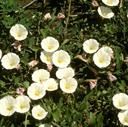
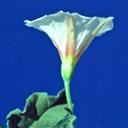
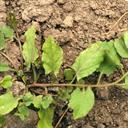
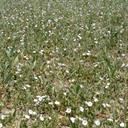
Identification
- Flowers: Trumpet-shaped flowers, light pink to white.
- Seeds / Roots: Reproduces vegetatively from roots, rhizomes, stem fragments, and by seeds that can lie dormant in the soil for up to 50 years.
- Leaves: Smooth, arrowhead-shaped leaves.
- Flowering Time: June - October.
- Life cycle/ other: A deep-rooted perennial vine with twining stems that can reach 6 ft in length.
Impacts
- Once established, nearly impossible to fully eradicate.
- Out-competes native plant species by forming dense infestations.
- Field bindweed can reduce crop yields by up to 60%.
- Threatens restoration efforts by out-competing new plantings.
Control
Most effective control methods
- Remove seedlings before they become perennial plants and produce seeds. Don’t dispose in backyard compost piles.
- Avoid digging or tilling the soil around mature field bindweed roots; Roots or rhizome fragments left behind may resprout.
- For small infestations repeated hand pulling works eventually but is highly labor intensive.
- For small infestations herbicides can be painted or brushed on leaves to avoid drift onto desirable plants. Products containing glyphosate are effective when applied in the summer and fall before the leaves die back.
- For large infestations smothering plants with mulch, black plastic or plastic-fiber mats (geotextiles) is another option, but the covering must be kept in place for several years. Success may be somewhat limited as field bindweed can persist without light, sending its underground roots beyond the edge of the covering to start a new infestation.
- For best results, control methods should be used throughout several growing seasons; success in controlling this weed requires the prevention of seeds, competition from more desirable vegetation and vigilance in removing new growth.
Control methods and timing
| March | April | May | June | July | Aug | Sept | Oct |
|---|---|---|---|---|---|---|---|
|
Prev Mech Chem |
Prev Mech Chem |
Prev Mech Chem |
Prev Mech |
Prev Mech |
Prev Mech Chem |
Prev Mech Chem |
Prevention (Prev) Monitor and destroy new plants before seed production.
Mechanical (Mech) Hand pulling, digging, cutting, mowing and tilling.
Cultural (Cult) Biological control agents, livestock grazing, and revegetation practices.
Chemical (Chem) Selective herbicides based on the plant and the specific location. Check our weed fact sheets for specific control information.
Large Images
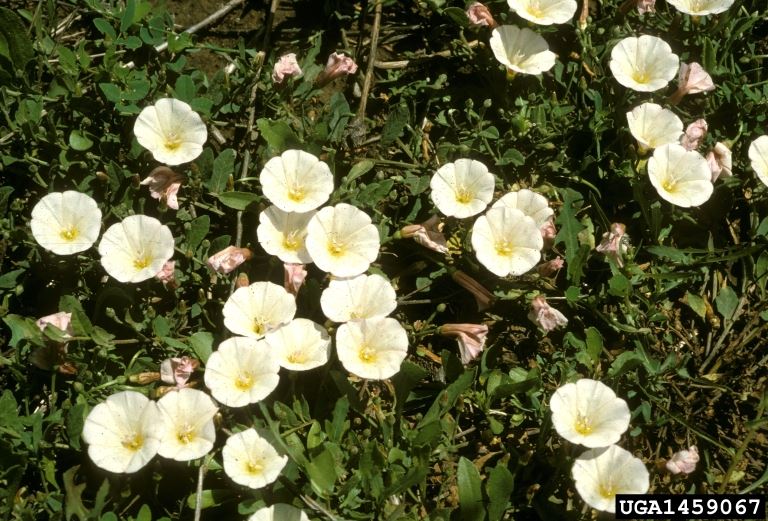
Field bindweed: flowers
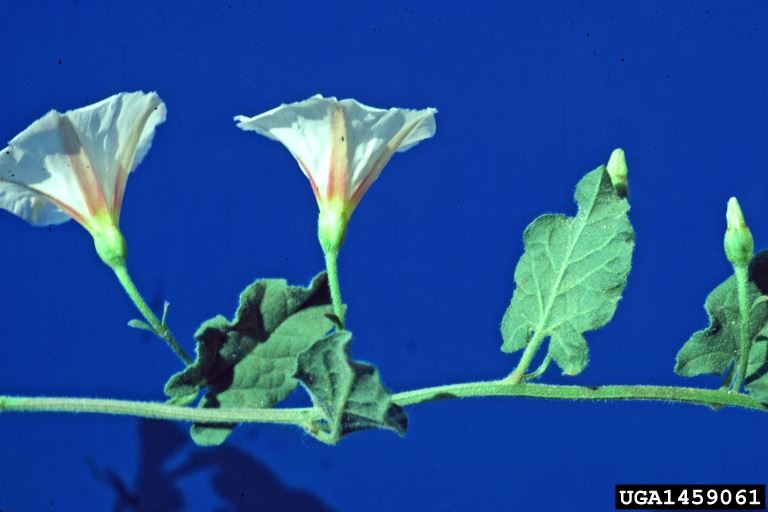
Field bindweed: flowers and leaves
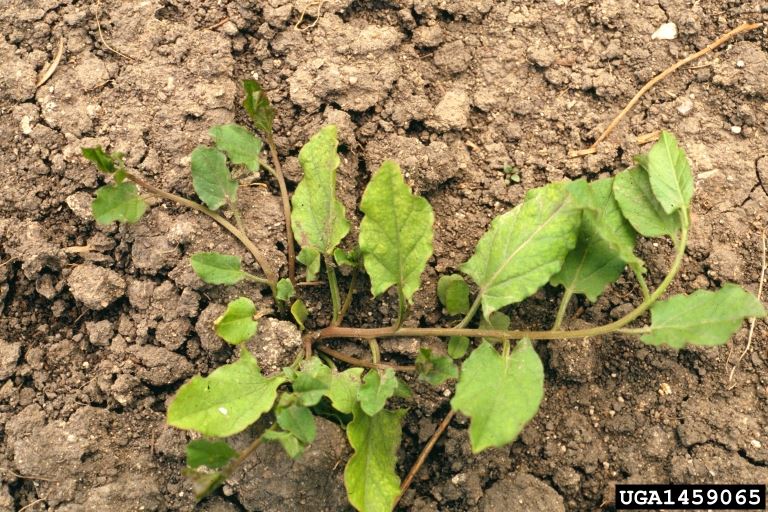
Field bindweed: foliage
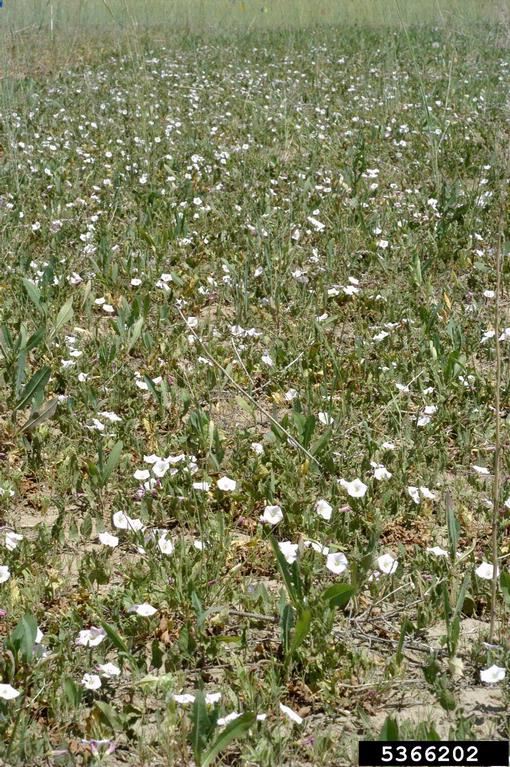
Field bindweed: infestation
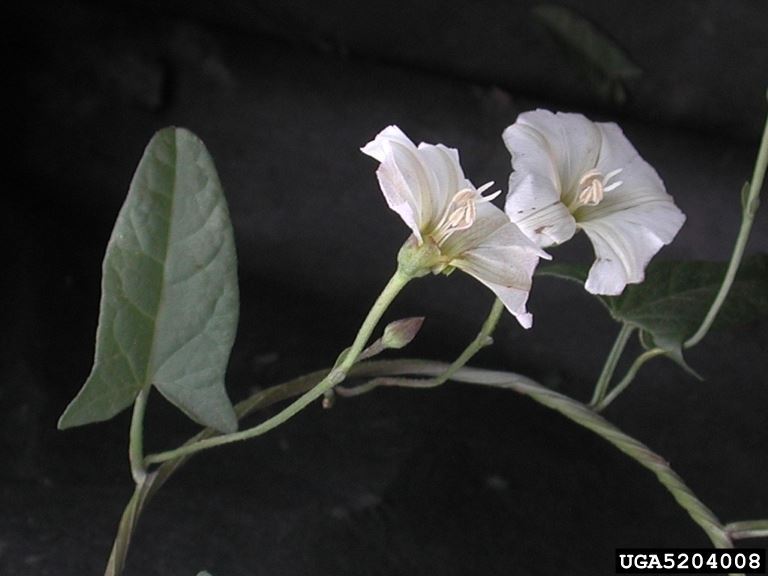
Field bindweed: flowers and leaves
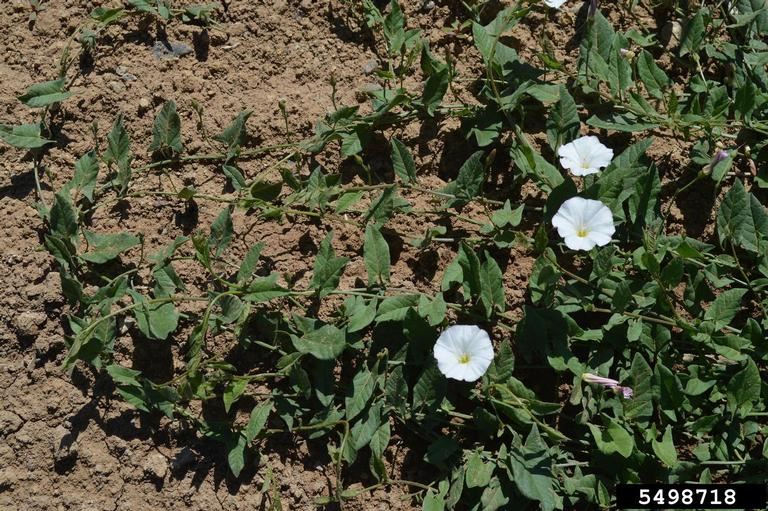
Field bindweed
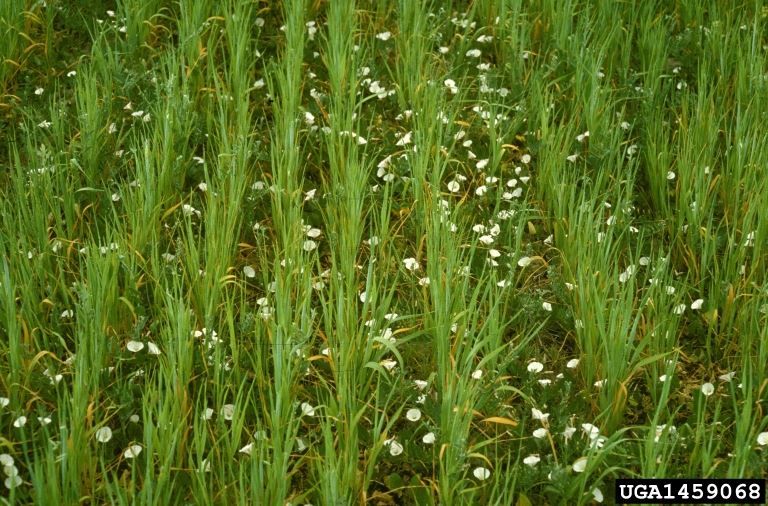
Field bindweed: infestation
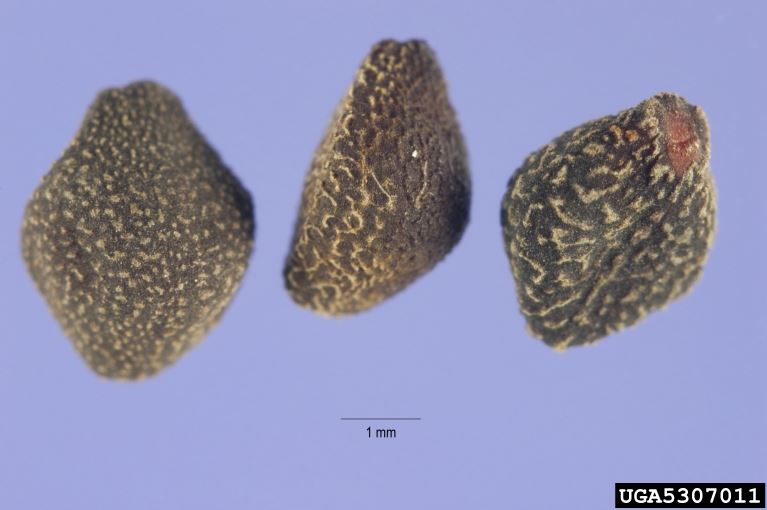
Field bindweed: seeds
Resources
-
Links
- University of Nevada Cooperative Extension: Managing Field Bindweed PDF
-
References
Invasive Species Compendium. (2018, July 15). Convolvulus arvensis (bindweed). Retrieved from https://www.cabi.org/isc/datasheet/15101
King County Noxious Weed Control Program. (2007, September). Field bindweed (aka morning glory) [PDF file]. Retrieved from https://www.nwcb.wa.gov/pdfs/Bindweed_factsheet_King.pdf View PDF
University of California Statewide Integrated Pest Management Program. (2011, October). Field Bindweed. Retrieved from http://ipm.ucanr.edu/PMG/PESTNOTES/pn7462.html
University of Idaho. (2005, October). Field Bindweed [PDF file]. Retrieved from http://www.cals.uidaho.edu/edComm/pdf/pnw/pnw0580.pdf View PDF
Zollinger, R. & Lym, R. (2000, January). Identification and control of field bindweed [PDF file]. Retrieved from https://www.nrc.gov/docs/ML1227/ML12276A280.pdf View PDF




